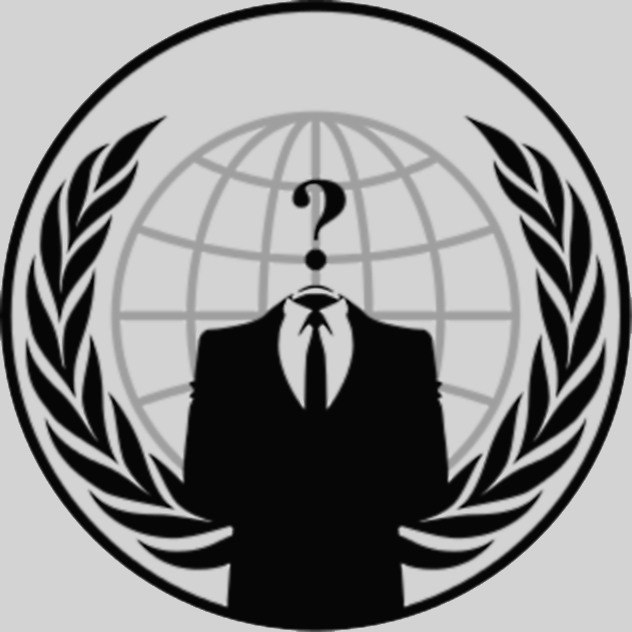 Technology
Technology  Technology
Technology  Humans
Humans 10 Everyday Human Behaviors That Are Actually Survival Instincts
 Animals
Animals 10 Animals That Humiliated and Harmed Historical Leaders
 History
History 10 Most Influential Protests in Modern History
 Creepy
Creepy 10 More Representations of Death from Myth, Legend, and Folktale
 Technology
Technology 10 Scientific Breakthroughs of 2025 That’ll Change Everything
 Our World
Our World 10 Ways Icelandic Culture Makes Other Countries Look Boring
 Misconceptions
Misconceptions 10 Common Misconceptions About the Victorian Era
 Mysteries
Mysteries 10 Strange Unexplained Mysteries of 2025
 Miscellaneous
Miscellaneous 10 of History’s Most Bell-Ringing Finishing Moves
 Technology
Technology Top 10 Everyday Tech Buzzwords That Hide a Darker Past
 Humans
Humans 10 Everyday Human Behaviors That Are Actually Survival Instincts
 Animals
Animals 10 Animals That Humiliated and Harmed Historical Leaders
Who's Behind Listverse?

Jamie Frater
Head Editor
Jamie founded Listverse due to an insatiable desire to share fascinating, obscure, and bizarre facts. He has been a guest speaker on numerous national radio and television stations and is a five time published author.
More About Us History
History 10 Most Influential Protests in Modern History
 Creepy
Creepy 10 More Representations of Death from Myth, Legend, and Folktale
 Technology
Technology 10 Scientific Breakthroughs of 2025 That’ll Change Everything
 Our World
Our World 10 Ways Icelandic Culture Makes Other Countries Look Boring
 Misconceptions
Misconceptions 10 Common Misconceptions About the Victorian Era
 Mysteries
Mysteries 10 Strange Unexplained Mysteries of 2025
 Miscellaneous
Miscellaneous 10 of History’s Most Bell-Ringing Finishing Moves
10 Facts Everyone Should Know About Anonymous
Have you ever thought about joining Anonymous? If you do, be careful who you trust. To become a member of Anonymous is easy. All you have to do is proclaim yourself one of them. The hard part is not getting caught.
10 Anonymous Is Not An Organization

Anonymous began on the website 4chan, specifically the /b/ discussion board, where anime fans gathered to post images and make snarky comments. To encourage irreverence, each user was given the screen name “anonymous.” A subculture of like-minded individuals with a strong sense of justice and a desire to wreak havoc eventually evolved from /b/. These are the people whom we refer to as Anonymous today.
Anonymous has no leader, which is why their symbol is a man without a head. There’s no legitimate code of conduct or infrastructure. People of different backgrounds and philosophies come and go as they please, in some cases only participating in a single cause and vanishing. Barret Brown, a journalist and former member, describes Anonymous as a series of relationships. Those who can consistently rally others to their cause are the ones with the most power, as are those who have proven themselves through hacking.
9 Anyone Can Join
If you wish to join Anonymous, there will be no gatekeepers to stop you. But if you’re really thinking of doing this, AnonInsiders recommends that you first consider joining activism groups that operate within the confines of the law instead. If you still want to continue your journey with Anonymous, the website lays out how to encrypt your computer for maximum privacy and how to contact them using an alias over encrypted Internet relay chats (IRCs). You will have to build relationships and earn trust over several years before becoming a serious hacker.
If you think the anons will be welcoming, well . . . you could be right and you could be wrong. Although Anonymous does have good and altruistic members, don’t forget that they accept anybody. Some people are willing to use others as patsies, while others are informants for the police. Naive members are sitting in jail because they trusted the wrong anons.
8 Few Of Them Have Actual Hacking Skills

Because there is such a low barrier of entry, only a handful of anons are elite hackers—those with the skills necessary to exploit security flaws in systems. So why do they have so many members? It’s because they need every computer they can get to perform a Distributed Denial of Service (DDoS) attack. This sort of attack works by sending an overload of information to a network, causing it to crash. In other words, it takes a website offline for a few hours. This is the same thing that happens when an otherwise small website receives a sudden surge in popularity. It can’t handle the increased traffic flow and crashes, making it unusable for administrators and visitors until the traffic returns to normal.
Essentially, it is a form of protest. It’s the modern-day equivalent of activists locking arms in front of a building so the employees can’t go to work that day. The truth is that Anonymous is as effective in taking down evil corporations as the Susan G. Komen foundation is in curing breast cancer, meaning that they mainly just raise awareness for themselves and the cause. If you’re willing to risk breaking the law over a protest, then godspeed.
7 How Participation In Anonymous Works
Once you’ve built your online alias and made some friends in the secure IRC, the next step is to find a cause that you support. If, for instance, you wanted to take part in their operation against Scientology, you would find the IRC channel dedicated to that operation and pledge your support in the chat room.
The software that Anonymous uses to launch their DDoS attacks is called a “low-orbit ion cannon” (LOIC). This software allows your computer to deliver large-scale hits to any website. Anons vote on which targets to attack, and if you disagree with a target, you can withdraw your computer from the botnet, making the ion cannon weaker. Once the operation organizers give the signal, you enter a target URL, enter the number of hits you want to send (enough to overload the network), click a button, and fire away.
6 Using The Ion Cannon Is Dangerous—For You

It’s not illegal to claim affiliation with Anonymous, nor is it illegal to chat online, but if you use the LOIC, you could face serious jail time.
In 2008, Anonymous embarked on a series of pranks and protests against the Church of Scientology. This was the moment that Anonymous turned from a group of Internet trolls into political activists. They flooded Scientology headquarters with prank calls, sent them all-black faxes to deplete their ink, and even marched in physical protest, wearing Guy Fawkes masks to conceal their identities. Their main weapon was the LOIC, which they used to take down the Scientology website.
But what many novice anons didn’t realize was that ion cannon attacks were traceable. Many of them either didn’t know what they were doing was illegal or had been led to believe that they couldn’t be prosecuted because there were too many of them. Brian Thomas Mettenbrink, who was 18 when he used the LOIC, served a year in prison and had to pay $20,000 in compensation to the Church of Scientology.
5 The Pirates Of The Information Age

By 2009, Scientologists had stopped interacting with protesters and improved online security, rendering Anonymous powerless. A kind of civil war erupted within the group between those who wanted to remain politically active and those who just wanted to play pranks. Anonymous fell out of the public eye, and interest waned, resulting in a dip in membership. Anonymous moved off the IRC channels and back onto 4chan’s /b/ board.
But in September 2010, a sort of “anti-Anonymous” surfaced. Aiplex Software used Anonymous’s tactics to take down websites, but these were no activists. This Indian company worked on behalf of the record industry and the movie industry. They launched attacks to sink websites that provided copyrighted content, like The Pirate Bay.
Aiplex was a common enemy upon which the activists and pranksters of Anonymous could agree. United, they hopped back onto the IRC channels and aimed their ion cannons at Aiplex, the RIAA, the MPAA, and other websites associated with copyright protection. However, IRC network operators became aware that Anonymous was using their system to plan illegal activities and began shutting those channels down. Anons organized a group of servers to host their own independent IRC network, which they called AnonOps. In the end, copyright protection–related websites suffered 537.55 hours of downtime. Anons hacked the Copyright Alliance website and posted “Payback is a bitch” on their front page.
4 Zombie Botnets

In November 2010, WikiLeaks began to release 500,000 secret US diplomatic cables. Under threat of legal action, the US government coerced financial institutions, including PayPal, into cutting off service to WikiLeaks. Anonymous announced their support of WikiLeaks in a press release and waged war against PayPal and the other financial institutions.
Anonymous went after PayPal’s main site on December 8, but PayPal’s reinforced network withstood the ion cannon attack. There just weren’t enough Anonymous members to offer support. Two hackers who went by the code names “Civil” and “Snitch” brought a legion of computers under their control using a virus. These “zombie computers” formed an involuntary botnet that brought enough ion cannons to the table to take down PayPal’s main transaction site. PayPal estimated that the damage cost them $5.5 million. They gave the IP addresses of 1,000 attackers to the FBI, leading to the arrests of 14 individuals, each of whom pleaded guilty to misdemeanors.
3 The Hacker Wars
Thanks to zombie botnets, a legion of anons was no longer necessary to carry out a DDoS attack. A handful of Anonymous’s most skilled hackers splintered off to form an exclusive team. They called themselves LulzSec. Their leader went by the alias “Sabu.” He was considered the most skilled hacker in the Anonymous collective.
LulzSec had grown tired of activism and wanted to go back to the roots of Anonymous and 4chan, which was causing chaos for no reason other than to annoy people and laugh about it. They began by hacking Fox and leaking the personal information of over 73,000 The X Factor contestants. Then, they hacked PBS, posting a fake news story stating that Tupak and Biggie were still alive and living together in New Zealand. Later, they hacked a porn website and published the email addresses and passwords of 26,000 members. But like junkies seeking a stronger fix, these low-risk crimes no longer thrilled Sabu and his crew, so they began to tamper with the websites of the US Senate, the FBI, and the CIA.
LulzSec’s crimes against innocent Internet users outraged other online activists. Hacker groups with colorful names like TeaMp0isoN and Team Web Ninjas sought to identify the members of LulzSec and hand that information over to authorities. So too did a hacker vigilante known as “the Jester,” who claimed to be acting out of patriotism for the United States. Their investigations into Sabu pointed to Hector Xavier Monsegur, a 28-year-old high school dropout living in New York City.
2 The Traitor
Hector Monsegur was the unemployed foster father of two girls, his cousins. Their mother was in jail, and he was their sole provider. When the FBI secretly arrested him on June 7, 2011, Hector did everything he could to stay out of prison. He quickly agreed to become an FBI informant in addition to helping them build a case against his friends in LulzSec.
Under the FBI’s direction, Hector turned LulzSec into an aggressively criminal organization known as AntiSec, which participated in a massive crime spree with Anonymous. They publicized the social security numbers of border patrol officers, hacked into military defense contractor websites, and stole the credit card numbers of thousands of police officers.
In December 2011, AntiSec member Jeremy Hammond broke into the server for Stratfor, a Texas-based global intelligence company. He stole vast archives of confidential emails as well as 30,000 credit card numbers from their databases. Hector provided a server to store the data, but unbeknownst to Jeremy, it was an FBI server.
1 Conspiracy Theory
The FBI had far bigger fish to fry than the pranksters at LulzSec. Supposedly, Hector Monsegur had been setting up a deal to sell the Stratfor data to an FBI informant within Wikileaks as part of an FBI effort to frame Julian Assange. However, Jeremy Hammond may have realized that something was wrong. The hack was too easy, the credit card info was hardly protected, and Hector was now working on a deal instead of giving the info out for free. Jeremy released the Stratfor data to the public before Hector could finish the deal.
With Assange out of reach, the FBI took their frustrations out on Hammond. Several prominent LulzSec members were arrested and sentenced to prison. Jeremy was given the maximum sentence of 10 years and is currently serving time in prison. In court, Hector Monsegur was described as a model informant who helped the FBI in any way he could. He got off with a sentence of time served. Today, he walks free.
+ Anonymous Is Broken
When news broke that the leader of LulzSec was an FBI informant, it shook Anonymous to the core. No one trusted anyone in the IRC. Anonymous became messy and disorganized. As the original elite hackers all retired or went to jail, new blood came in. This new generation gravitated to the causes of PC bullies and safe-space perimeter guards, and they put little forethought into their actions. Thus, Anonymous operations in recent years have been total disasters.
During the Ferguson protest, Anonymous believed they had uncovered the identity of the officer who shot Michael Brown. After Anonymous revealed the officer’s identity, exposing him and his family to death threats, Ferguson police revealed that Anonymous was wrong. Anonymous then identified a second officer as the shooter, but that turned out to be wrong, too.
In October 2015, Anonymous began an operation to reveal members of the Ku Klux Klan, but many of the people they “outed” were vocal racists who made no effort to hide their affiliations. Other people turned out not to be in the KKK at all, like cartoonist Ben Garrison. A racist once altered one of Garrison’s drawings to include an anti-Semitic message, and the current generation of Anonymous thought that was enough to link Garrison to the KKK.
In the wake of the Paris terrorist attacks, Anonymous has declared war on ISIS. They claim to have shut down over 20,000 Twitter accounts belonging to ISIS recruiters, but more credible organizations have discovered many of those accounts didn’t actually belong to terrorists. Anonymous apologized and promised to do better.
To view a rogues’ gallery of Anonymous’s hackers, click here. To read all of Matt’s lists, visit his blog.








